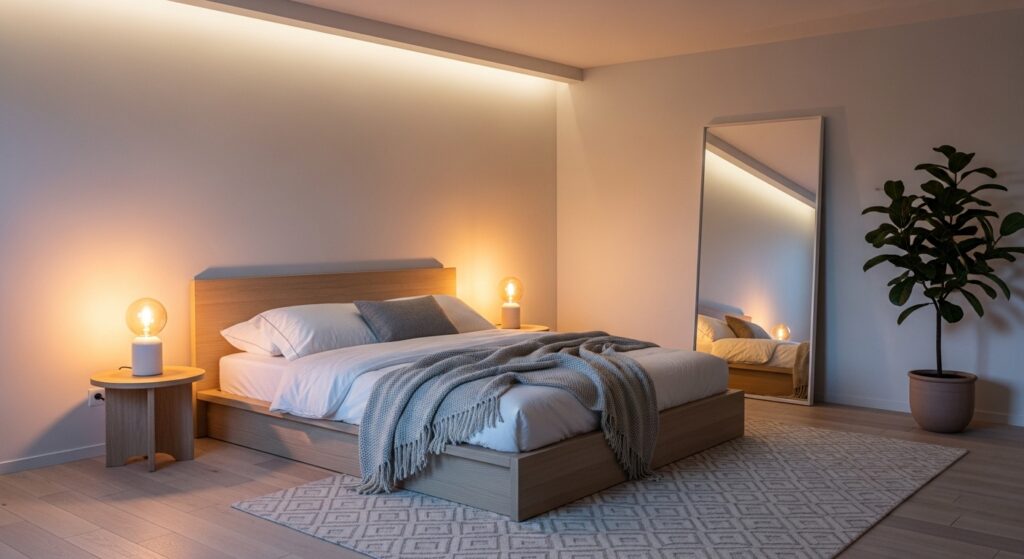Your environment shapes your emotions more than you might think. Among all design elements, layered lighting stands out as one of the most powerful tools for creating emotional balance at home. The right combination of light layers can influence how you feel, think, and connect — turning any space into a sanctuary of calm and focus.
Lighting is not only functional; it’s deeply emotional. Let’s explore how layered lighting can help you restore balance, reduce stress, and improve your overall well-being.

What Is Layered Lighting?
Layered lighting refers to the intentional combination of three key types of light: ambient, task, and accent lighting. Instead of relying on a single overhead fixture, layered lighting creates visual depth and emotional warmth by using multiple light sources at varying intensities.
- Ambient light provides the base illumination.
- Task light focuses brightness where activities occur — such as reading or cooking.
- Accent light highlights details, art, or architectural features.
When blended correctly, these layers create a sense of comfort and psychological harmony.
How Layered Lighting Affects Emotional Balance
Light directly influences circadian rhythms and serotonin levels, affecting mood and energy. Cooler tones stimulate alertness during the day, while warmer lights help the body relax and prepare for rest.
Studies show that lighting design impacts both emotional and cognitive well-being. According to Lighting Research Center, Rensselaer Polytechnic Institute, exposure to well-balanced light throughout the day can improve mood stability and productivity.
Applying Layered Lighting at Home
1. Create a Calm Base with Ambient Lighting
Start with soft, even lighting — such as ceiling fixtures or diffused LED panels. Avoid harsh glare and choose dimmable bulbs to adjust brightness as the day progresses. This layer sets the emotional tone of the room.
2. Use Task Lighting for Focus and Flow
Add table or floor lamps near reading chairs, desks, or kitchen counters. Proper task lighting improves concentration and reduces eye strain. It also helps establish a mental boundary between work and relaxation.
3. Highlight Emotion with Accent Lighting
Accent lighting adds personality and emotional depth. Use wall sconces, spotlights, or candles to highlight art, plants, or architectural textures. Warm-toned accents help trigger feelings of safety and intimacy — essential for emotional balance.
4. Integrate Natural Light for Wellness
Natural light should be the foundation of layered lighting. Keep curtains light and reflective surfaces bright to maximize daylight. Morning sunlight boosts energy and mood, while evening shadows signal rest.

Designing a Balanced Atmosphere
When designing with layered lighting, think in moods rather than watts.
Ask yourself:
- Do I want this room to energize or relax me?
- Where do I need brightness versus softness?
- How can I guide attention with contrast?
Combining different sources — pendant lamps, LED strips, candles, and sunlight — allows you to sculpt emotional flow throughout your home.
Final Thoughts: Light as Emotional Architecture
Layered lighting is more than a design trend — it’s emotional architecture. Each source of light plays a role in shaping how you feel in your space.
By curating light layers that shift with your needs, you can transform any room into a calm, balanced environment that supports your mental and emotional well-being.
Previous : Ergonomics Posture: Simple Adjustments for All-Day Posture Comfort
Related Link : CLAMWARE

